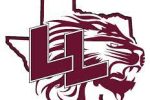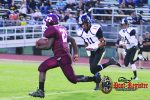Canadian company invests in Lockhart’s youth
By LPR Staff
Editor/POST-REGISTER
In the land where Football is King and anything north of the Red River is like a foreign country, it is often hard for Central Texans to find even one good reason to turn their eyes to our neighbors to the north in Canada and smile.
This week, however, Lockhart Lion football players and parents might have a
reason not just to smile, but to say a hearty and heart-felt “thank you.”
It seems that Canadian entrepreneur Jim Blumson made the decision, some months ago, to take his company, Impact-Alert, international. His plan, he said in a brief interview on Monday, is to introduce his technology – a non-mechanical sensor that measures the impact of “hits” to a helmet- to the United States. He could think of no better place to do that, he said, than Texas.
Initially, Blumson worked with an acquaintance in the Dallas area, hoping to donate his sensors to the school’s football program to help measure the effectiveness and lifespan of the team’s helmets. His intention was to provide at least 50 sensors, free of charge, to the Dallas-area school.
Their school board passed on the idea; Blumson’s friend made mention of another acquaintance, Paul Kilby, who is a football coach in Central Texas, and suggested he might be interested in trying to strike a deal.
Kilby, of course, is the returning Head Coach for the Lockhart Lions, and to say he was “interested,” is an understatement.
When he initially learned about the possible partnership, Kilby said he could not understand why the Dallas-area school would pass on the donation, because the sensors offer the potential to serve not only the students, but the district in several ways.
First of all, the sensors themselves measure whether or not a particular helmet has taken a “high duration, high impact” hit, which could signify that the helmet has reduced in effectiveness and needs to be replaced, Kilby said. After a certain amount of wear and tear, helmets become less effective at protecting players, and often, that wear and tear has more to do with activity than it does with time.
Blumson says his Impact-Alert sensors can help coaches and equipment managers see at a glance whether the helmet should be checked out.
More than that, though, the sensors allow an easily-recognizable way for coaches and trainers to recognize if a student has taken a hard hit.
“Sometimes, you’ll get caught in the moment and not really acknowledge that the kid has taken a real hit,” Blumson said. “The player won’t be exhibiting any symptoms right after, and you’ll think that everything is fine. And then, a few days later, he might not be acting quite right, and you see that sensor and think ‘oh, he got hit harder than we realized.’”
While the Impact-Alert sensor certainly is not fool-proof in making diagnoses and should not be used as a substitute for medical attention, he said, it can act as a visual cue.
“It doesn’t measure a concussion, and it can’t diagnose a concussion,” he said. “What we can do is tell whether the helmet (and therefore the player’s head) has received a high-duration, high-impact hit. The energy of a hit like that will travel all the way through the body, and it could be dangerous.”
With such a hit, he said, the sensor tubes in the Impact-Alert will shatter, turning one or two otherwise clear lines red.
As two-a-day practices began, Blumson paid a visit to the Lions in their locker room, briefly explaining the sensors. He also noted that while he had initially only donated 50 sensors to the team, he “expects to see one on every helmet in your locker room soon.”



